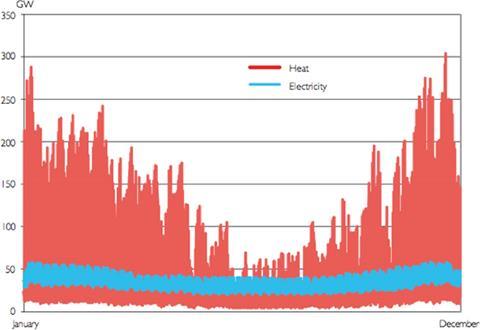What are the implications of a widespread electrification of cities?

I was recently asked my opinion of a proposal that we should electrify cities as a move towards achieving zero carbon emissions. I’m positive about all electric cities. It’s like “digital versus analogue”, it’s inevitable, and many of the benefits will not be related to CO2 emissions. However, in answer I added that I thought it unlikely that the UK would lead the way as our mains gas and fuel transport infrastructure is so developed.
Since then the thought about electric cities has occupied my mind. The benefits are large, in theory. The noise and air pollution that blights cities could be improved immeasurably. Like ATP (adenosine triphosphate) in living organisms, electricity is a universal energy source, and that universality, along with the potential to store it, will allow the much smarter use of energy on a town, city or national scale. The air quality and noise benefits can hardly be overstated. It is also likely to be crucial in an increasingly automated future.
I was at BASE London a couple of months ago and spoke to UK Power Networks who are running a lot of research and experiments in this area. For example, time of use charging - where a consumer pays a varying amount of money depending on when they use it - electric vehicle roll-out, smart meters and active network management. To electricity distributors the ability to reduce the peak demand even a small amount can result in large carbon and financial savings, which could be passed on in lower bills.
The major stumbling block en route to this sunlit upland, is illustrated in the DECC graph below. It shows electrical and thermal demand in GWs. The point is that the peak thermal demand is nearly 300GW against an electrical demand of around 60GW. If this is all electrified we are in trouble.

There are some solutions to this seemingly insuperable problem; lighting is becoming more efficient, time of use charging could reduce peaks, and heat pumps could provide heat at efficiencies of 200-300%. Hot water storage could also be a part of the solution; perhaps the hot water tank will make a comeback? In addition it is only urban commercial and residential loads we are suggested to electrify. However, even this will still mean it is likely our electrical demand will increase.
The stumbling block is that the peak thermal demand is nearly 300GW against an electrical demand of around 60GW. If this is all electrified we are in trouble
This ignores the impact of electrical transport demands, although it is conceivable these will be part of the solution in the future if charging can be set to the night time or even used as temporary power sources/sinks for the network, (which may require a rental rather than ownership model). We may need to double our electrical supply or more. This is a problem when we seem unable to maintain a good margin of supply when peak demands are actually dropping. However the government is addressing this through the Energy Act on a national scale and UK Power Networks analysis indicates that local grid reinforcement costs are small at least in comparison to other options.
Another issue to resolve is that the use of heat pumps requires relatively thermally efficient homes and businesses and this requires the widespread retrofitting of about 75% of our building stock. Whilst there has been a lot of talk on this, delivery has been much lighter. This needs to change.
An ambitious goal such as all-electric in our city centres by 2030 may drive such an ambition but is it feasible or beneficial enough?
At WSP we are exploring this subject further and will publish our findings soon - hopefully we will have more answers then.
Barny Evans is principal consultant, renenwables and energy efficiency, at WSP



























No comments yet